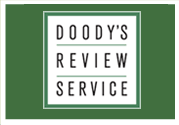|
|
|
eBook/Digital Version available from:
|
 Score: 97
Score: 97 |
 |
| Population Health, Epidemiology, and Public Health: Management Skills for Creating Healthy Communities, 2nd Edition |
 |
|
Doody's Core Title (2025 Edition)
|
 |
| Score(s): |
|
2.8
(Health Sciences - Health Care Administration)
|
|
 |
ISBN: 978-1-64055-292-0,
386 pages,
Soft Cover
ISBN-10: 1-64055-292-8 |
 |
| Copyright: |
2022 |
 |
| Edition: |
2nd |
 |
| Author: |
Caron, Rosemary M., PhD, MPH |
 |
|
Specialties:
|
Epidemiology
, Public Health
, Community Health |
 |
| Publisher: |
ACHE Learn, formerly Health Administration Press |
 |
| Imprint: |
AUPHA/HAP |
 |
| List Price: |
$90.00 |
 |
| Google: |
|
|
 |
|
|
|
|
At A Glance
|
COVID-19 triggered broad discussions of population health, epidemiology, and public health, not only in academic communities but also in society at large. Although masks, social distancing, and vaccines helped curb its spread, the novel coronavirus will clearly not be the last infectious disease that tests our preparedness. Healthcare professionals must continue to collaborate and implement new strategies to mitigate future crises. Population Health, Epidemiology, and Public Health: Management Skills for Creating Healthy Communities presents the principles and tools that administrators and practitioners need to monitor, assess, and manage the health of populations in challenging times. Although public health catastrophes can and will change over time, the key concepts and evidence-based lessons detailed in this book are both timeless and essential. New content in this edition includes: - Current public health initiatives, including Healthy People 2030
- Discussions on ethical conduct in research
- Up-to-date epidemiological case studies on Salmonella, Zika virus, measles, and COVID-19
- Approaches to population health, such as community health needs assessments and Health in All Policies
- Exercises that draw on data sources
Learn more and order here
|
|
Reviewer:
|
Frances Sparti,
DNP, MSN, BSN
(Simmons University)
|
 |
|
Range
|
Question
|
Score
|
| 1-10 |
Are the author's objectives met? |
10 |
| 1-10 |
Rate the worthiness of those objectives. |
10 |
| 1-5 |
Is this written at an appropriate level? |
5 |
| 1-5 |
Is there significant duplication? (1=significant, 5=insignificant) |
4 |
| 1-5 |
Are there significant omissions? (1=significant, 5=insignificant) |
4 |
| 1-5 |
Rate the authority of the authors. |
5 |
| 1-5 |
Are there sufficient illustrations? |
5 |
| 1-5 |
Rate the pedagogic value of the illustrations. |
5 |
| 1-5 |
Rate the print quality of the illustrations. |
5 |
| 1-5 |
Are there sufficient references? |
5 |
| 1-5 |
Rate the currency of the references. |
5 |
| 1-5 |
Rate the pertinence of the references. |
5 |
| 1-5 |
Rate the helpfulness of the index. |
4 |
| 1-5 |
If important in this specialty, rate the physical appearance of the book |
N/A |
| 1-10 |
Is this a worthwhile contribution to the field? |
10 |
| 1-10 |
If this is a 2nd or later edition, is this new edition needed? |
10 |
|
 |
|
Reviewer:
|
Frances Sparti,
DNP, MSN, BSN
(Simmons University)
|
 |
|
Description
|
| This book combines the basic elements for a healthy nation and world, including population health, epidemiology, and public health. These disciplines need to be viewed within their interrelationships to support meeting the complex challenges affecting today's world. |
 |
|
Purpose
|
| With the stated goal of promoting population and public health, this book offers the foundation and framework for addressing the problems communities face. |
 |
|
Audience
|
| This book is written for students in many healthcare disciplines, but it also addresses the learning needs of health administrators and public health practitioners. In addition, policymakers could benefit from the principles and tools included in the book. |
 |
|
Features
|
| There are 15 chapters beginning with chapter 1 (Public Health: Prevention, Promotion, Protection) and ending with chapter 15 (Keeping Communities Healthy During the COVID-19 Pandemic). Each of the chapters begins with learning objectives and ends with key points and references. There are numerous definitions in the sidebars, which aid in understanding the concepts presented. Throughout each chapter there are insets for discussion and exercises to enhance learning. The illustrations and exhibits are beneficial to readers and add depth to the content. The many models and frameworks included are definitely an added bonus. Chapters 2 and 3 review the social determinants of health, providing a perspective ranging from where an individual lives to ways to improve community health. Chapters 4 and 5 provide the basic considerations of population health. Chapters 6 through 10 give thorough insight into epidemiology. Chapter 11 explains the mechanics of how to do a community health assessment. Chapters 12 through 14 provide a more in-depth view of population health. Finally, chapter 15 is a much-needed overview of the current pandemic as well as public health lessons learned from the COVID-19 outbreak. Internet and social media resources have also been thoughtfully included. |
 |
|
Assessment
|
| This well-written, detailed book is organized skillfully to aid students and others in learning the content and concepts necessary for advancement of public/community health. This second edition includes content needed since the advent of the global pandemic. |
 |
|
|
|
|
|
|
|
